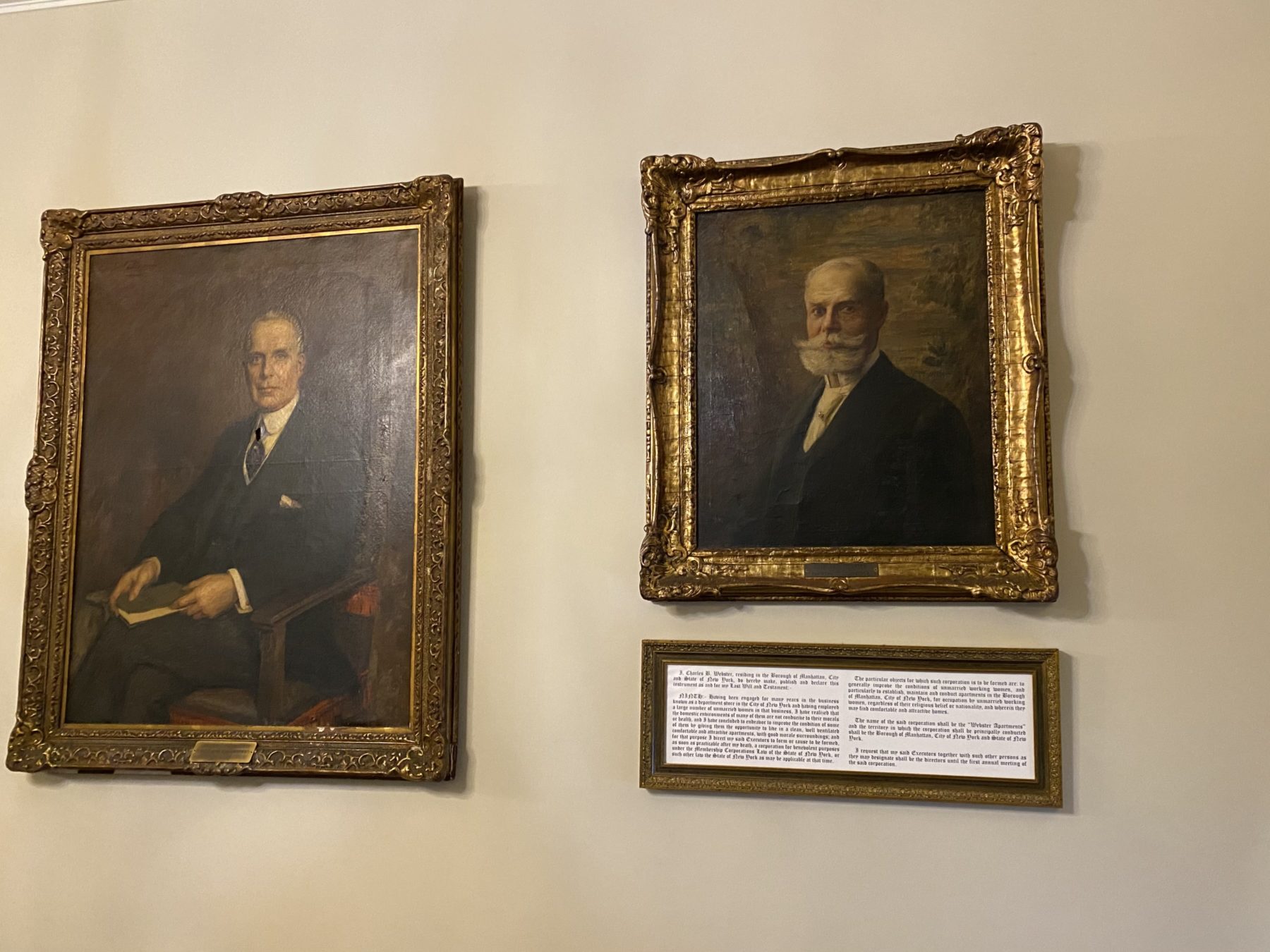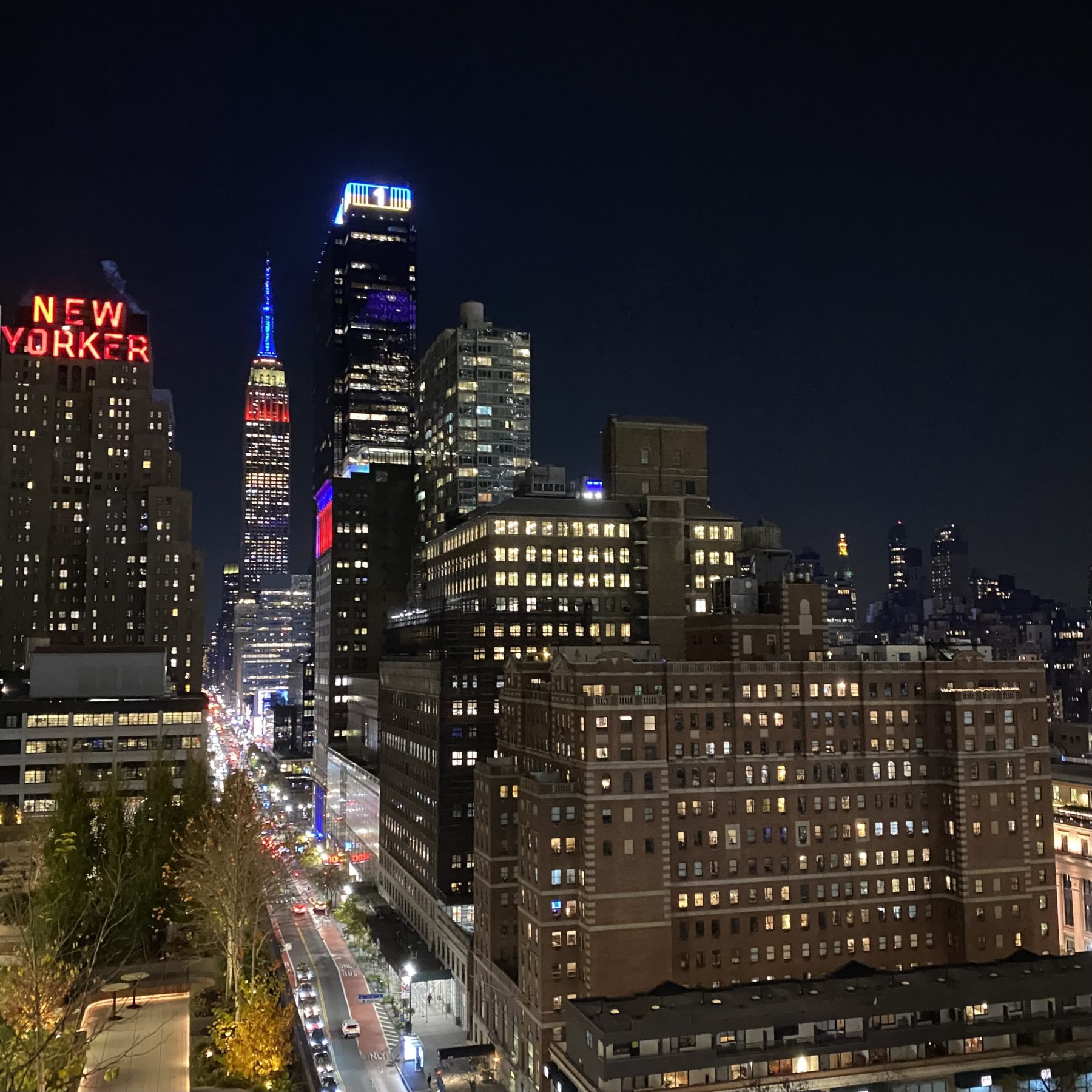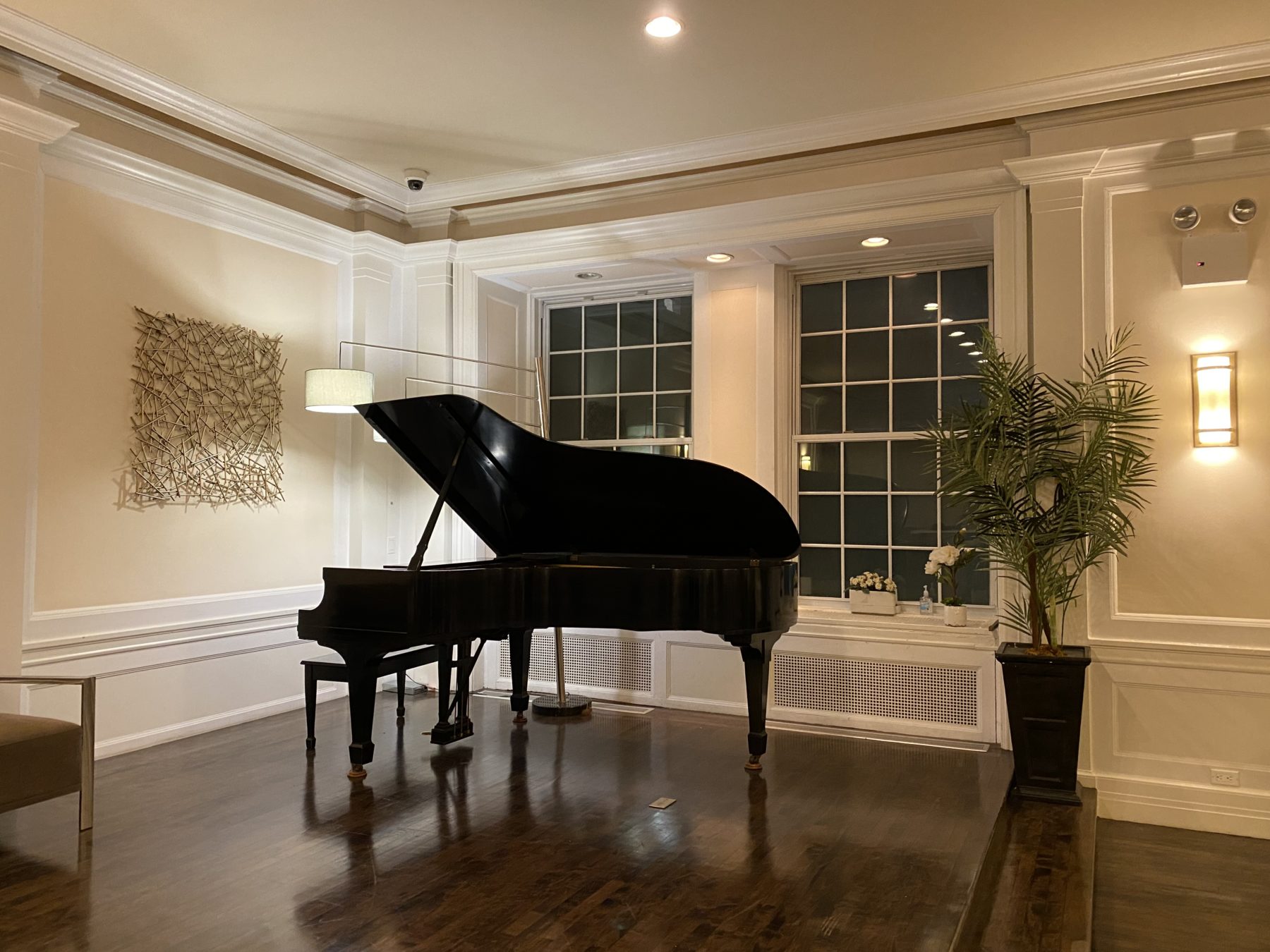Lara Tomei, aged 25, gently rocked from side to side on a revolving chair. She was still wearing the navy blazer she wore to the office that morning. A crimson carpet covered the floor and chandeliers hung from the ceiling. This is the library of the Webster Apartments, one of the last remaining all-female residences in New York City. Hudson Yards is a five minute walk west and Penn Station is a six minute walk east. Behind the red brick facade at 419 West 34th Street are not only a library but also a cafeteria, an on-site laundry, an events space, and 370 dorm-style rooms for young working women.
Tomei was positioned at a desk underneath one of the chandeliers, clicking her laptop keys. Like all the other residents of the Webster Apartments, she was searching for a new place to live. Every resident received an email from management last May: “We are in the process of selling our current building.” Now, everyone has to leave by December 31.
At the library’s entrance, a rather serious portrait of Charles Webster, the Webster Apartments’ founder, hangs in an ornamented bronze frame. In this portrait, he’s shown wearing a stiff ironed white dress suit and black jacket, his mustache curling upwards on either side like a smiley face. There are two distinct creases above his eyebrows. “Having employed a large number of unmarried women… I have realized that the domestic environments of many of them are not conducive to their morals or health,” reads the inscription under the painting.

A portrait of Charles Webster in the library at The Webster Apartments.
(Credit: Henrietta McFarlane)
Webster made his fortune at Macy’s, about half a mile east of this women’s only apartment complex. The mid-19th century growth of manufacturing and industry in the United States increased demand for female labor in New York City. Macy’s employed thousands of young women as shop girls, but there was no urban housing for young, single women. It wasn’t just the practical problem of finding a decent physical space to live. More than that, women were supposed to exist in separate moral spheres from men, aspiring to the role of “angel in the house,” historian Nina Harkrader wrote in a New York Historical Society post. “Urban housing for single working women…became central to the struggle for women to be accepted as independent citizens.”
Webster’s apartment building opened its doors in 1923, and his radical vision soon inspired others. The Barbizon was built in 1927. It was probably the best known of the modern women’s hotels, providing homes to Joan Crawford, Grace Kelly, Sylvia Plath, and Joan Didion. Plath captured a 1950s Barbizon — disguised as ‘The Amazon’ — in her semi-autobiographical novel The Bell Jar. But the Barbizon changed its policy in 1981 when the board decided to admit male guests.
At the Webster, not much has changed. Men still aren’t allowed beyond the ground floor. A current Webster resident, Aoife Blanchard met a group of female visitors in the lobby on a recent November evening. “New York is still a scary place to live. It’s still expensive and we still need food,” she said. Although it’s hard to imagine that “build your own Hawaiian Poké bowl” would have been Tuesday’s dinnertime option in the 50s. Aoife pressed the elevator button. She wanted to show her friends the roof terrace, which is the building’s undisputed highlight. She pointed out a black and white photo opposite the elevator entrance that depicted a young woman reclining on one of the rooftop’s deck chairs.

The view from the rooftop at The Webster Apartments. (Credit: Henrietta McFarlane)
The elevator doesn’t go all the way to the top floor, so Aoife and her friends ascended a couple of floors using the fire escape stairs. Slightly out of breath, they made their way to the railing at the edge of the roof and peered out at the Empire State Building. The first young females to live here wouldn’t have seen this building, nor heard of Jay-Z’s ‘Empire State of Mind.’
Even in the Webster’s first years, New York City was a destination for women starting out in their careers. Professions have come in waves at Webster. A piano on the ground floor and row of practice rooms still serve as reminders of aspiring Broadway stars trying to make a break in their performing careers. Today, the laptops and bookable remote-working rooms are indicative of young women in office jobs, many of whom have had to slow the course of their progress during the pandemic. “Keep your heels, head and standards high,” “You go girl,” and “Strong is the new pretty,” read just a few of the motivational posters pinned to the walls. “They make us laugh,” said Blanchard.

A piano is located on the ground floor at The Webster Apartments. (Credit: Henrietta McFarlane)
Out on the roof, it was dark and a November breeze made the girls shiver. It was nearly 10 p.m. and The Webster Apartments’ guest curfew was about to kick in. On their way back downstairs, Aoife showed her friends to one of the bathrooms. It has a 1930s pull-down utility shelf. “For your purse and parcels” — Aoife read from the Nik-O-Lok company’s description.
Builders stopped constructing women’s apartments during the Stock Market Crash in 1929 and the Great Depression that followed. And they never really started again. By the end of the 20th century, most of these buildings were closed or repurposed. Margaret Clemons lived at Webster from 1977 to 1980. She paid $45 a week which rose to $52 by the time she left. Whenever she visits the building now, she is relieved by how little has changed. (Except for the now $425 per week rent.)
“We are all saddened to hear that the building will be sold and I desperately hope that similar housing, akin to this residence, will materialize to provide that same safe haven to young women,” she posted earlier this year.
Back in the Webster’s library, Tomei refocused her gaze on her laptop. Open pale blue tabs stretched across the top of its screen. Tomei sighs and clicks on the first tab. “Streeteasy.com: Filter by bedrooms, washer/dryer, and more.”
About the author(s)
Henrietta McFarlane is a journalist and masters student at Columbia Journalism School. She specializes in audio and international reporting.




